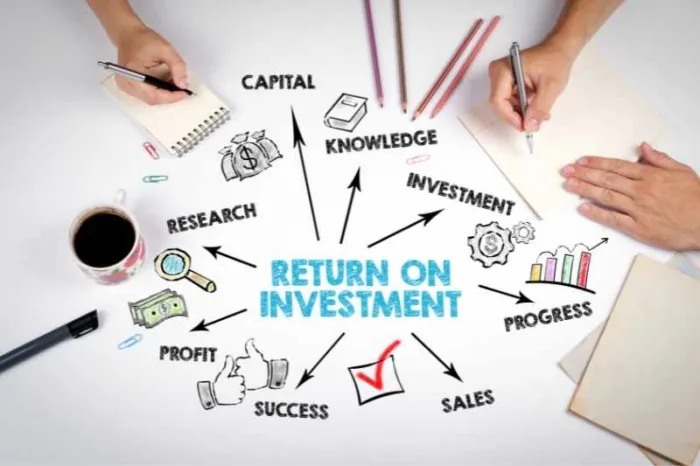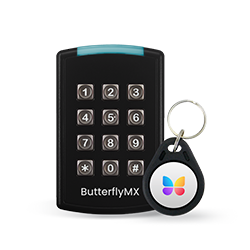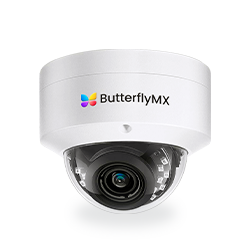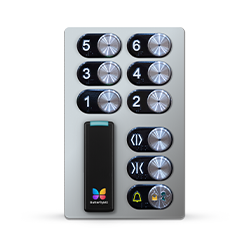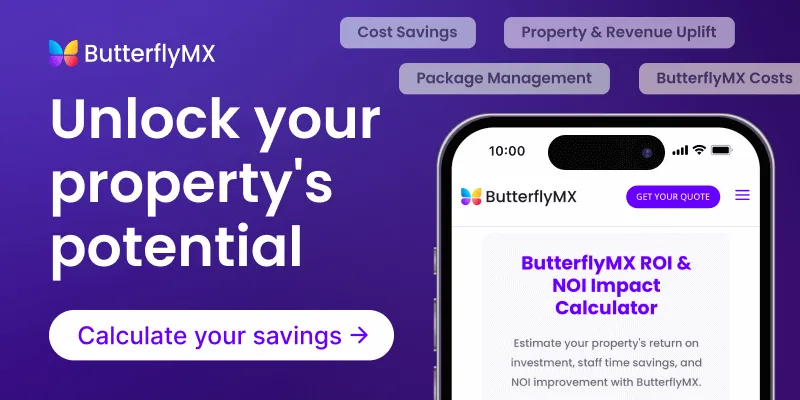Key takeaways:
- ROI in real estate is a metric used by investors to predict the profitability of a property investment.
- Calculate ROI by dividing the difference of selling price and investment price (aka the gains) by the investment price.
- ROI is used to determine whether the risk of investing in a certain property is worth it.
- It’s important to note that this metric only provides an estimate and doesn’t take into account variables that can’t be controlled or predicted.
- You can maximize the ROI of an investment property by adding proptech, obtaining and retaining the right tenants, maintaining the property’s condition, and reducing operating costs.
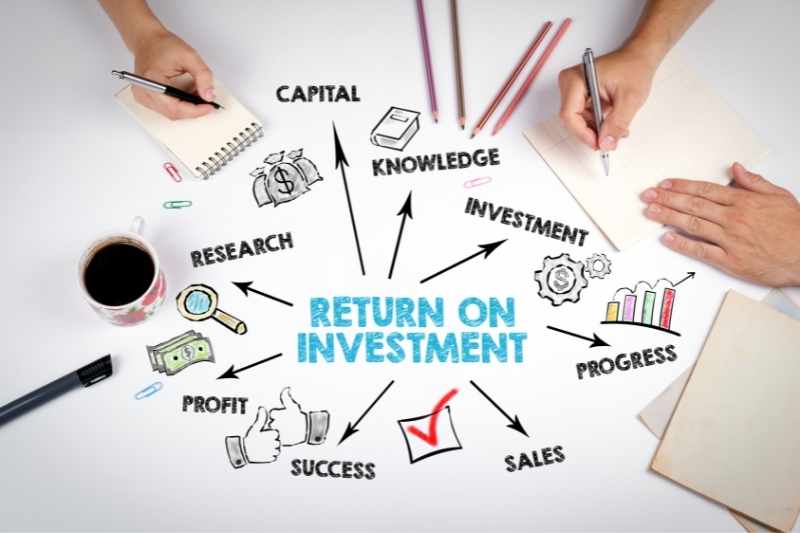
Disclaimer: This content is for informational purposes only, you should not construe any such information as legal, tax, investment, financial, or other advice. Nothing contained on our site constitutes a solicitation, recommendation, endorsement, or offer by ButterflyMX or any third-party service provider. ButterflyMX is not a financial adviser. You should always seek independent legal, financial, taxation, or other advice from a licensed professional.
If you’ve ever considered investing in real estate, you’ve probably heard of the term “return on investment,” or ROI, tossed around in conversation. ROI is a useful real estate metric that helps you increase the chance of profitable property investment.
But what exactly is ROI, how do you calculate it, and why does it matter? This post explores everything you need to know about real estate ROI and provides tips on successfully maximizing it.
This post covers:
More than 40K, 5-star reviews!

Video Intercoms
Open doors, gates & garages from anywhere.

QR Code Intercom
Smartphone-based visitor access.
Access Control
Fob, key cards, PINs, and mobile apps.
Security Cameras
Visibility throughout your property.
Vehicle Access
Hands-free access for gates & garages.
Package Room
Receive, store, and manage deliveries.
Smart Locks
Connect to all major brands and models.
Elevator Controls
Unlock key-fobbed elevators for anyone.
Front Desk Station
See all your doors and cameras in one place.
What is ROI in real estate?
Real estate return on investment (ROI) is a metric that real estate investors use to determine their return on an investment property. It measures the profit or gain made on an investment compared to the original cost of the investment, expressed as a percentage.
Essentially, ROI measures how efficient and profitable a real estate investment has been and could potentially be down the line.
Property investors use ROI to evaluate whether they should buy a property by comparing it to similar investments in the market. The value of calculating ROI is that it allows real estate professionals to predict — based on comparables — the profit margin expected on a property as a percentage of the cost.
Unlike other investments, real estate ROI significantly varies based on:
- Local market conditions
- Type of property (i.e., single-family, small vs. large multifamily, short-term real estate, or commercial real estate)
- Before-tax cash flow from rental income
So: What is a good ROI for real estate?
What one investor considers a “good” ROI might be considered “bad” for other investors. A “good” ROI is highly subjective because it largely depends on how risk-tolerant a particular investor is. But as a rule of thumb, most real estate investors aim for ROIs above 10%. For general insight, investors refer to major stock market indexes such as S&P 500 index.
How to calculate the ROI on rental properties
ROI on a real estate rental property is calculated using the following formula:
ROI = (Gain on investment – Cost of investment) / Cost of investment
You can invest in real estate either by using all cash or financing the multifamily property, which will result in different ROIs. Let’s look at the ROI for a property in both scenarios: cash purchase and financed purchase.
In this example, we’ll imagine the initial purchase price was $100,000 and sold after five years for $135,000.
Real estate ROI on a cash purchase
Note: Other factors go into ROI calculations in real life, such as property tax, which varies from state to state. We’ll exclude those in this example to keep things simple.
In this example, the gain on investment = $165,000 ($30,000 cash flow + $35,000 increase in selling price + $100,000 return on initial investment).
So, the total ROI = ($165,000 – $100,000) / $100,000 = 65%
And if you want to know the cash-on-cash return of the rental property, do the following calculation:
Cash on cash ROI = Annual before-tax cash flow / Total cash invested
= $6,000 / $100,000
= 6%
Real estate ROI on a financed purchase
Here, the gain on investment = $45,980 ($10,980 cash flow + $35,000 increase in selling price).
Total ROI = ($45,980 – $25,000) / $25,000 = 83.92%
As you can see, in this case, the rental property return on investment is higher when financing the investment than when investing with cash.
Learn about how much you should charge for rent:
Why ROI is so important
ROI in real estate is so important because this estimate will help you determine whether you should invest in a particular property and how it compares to other property investments of similar type and size.
The ROI also paints a picture of what your expenses will be — which, in turn, determines the property’s net operating income (NOI). Then you can assess whether potential income will offset those costs in a way that makes sense.
Now, you’re probably wondering: What is the average ROI on real estate?
Unfortunately, since there are so many variables to consider — including different capitalization rates for different markets — there’s no single, definitive average ROI in real estate. As a reminder, the ROI is just a predicted metric, and by no means is it guaranteed.
At the end of the day, ROI measures risks that are inherent in an investment. And there are numerous risks that just can’t be anticipated.
5 ways to maximize your real estate ROI
As a property owner or investor, you should look for tangible ways to maximize your property’s ROI. No matter what you invest in, your goal should always be to maximize your returns.
Here are five ways to maximize your real estate ROI:
- Automate property management with proptech
- Perform regular property maintenance and renovations
- Market your property to the right prospects
- Boost tenant retention
- Reduce operating costs
1. Automate property management with proptech
By automating tedious property management tasks with proptech, you’ll cut out a significant amount of manual administrative work.
With the right devices and integrations, all you need to do is enter a new resident’s information once, and the following will become automated workflows in the system:
- Assigning access control credentials
- New lease write-ups and delivery
- Lease renewals
- Rent & security deposit collections
- Maintenance requests & assignments
No piece of technology can ever replace the value of property staff members. However, since staff’s time is highly valuable, they should spend more time on providing customer-facing services rather than repetitive tasks that can be easily automated by proptech.
Sometimes, in order to make money, you need to spend money first. For instance, investing in a smart intercom that integrates with your property management software is a great use of a capital expenditure that’ll raise your property’s value down the line.
2. Perform regular property maintenance and renovations
Everything deteriorates over time — it’s inevitable. As such, your investment property will endure some cosmetic and structural decay as the years go on.
However, you can perform a number of routine property maintenance tasks to keep your building in top-notch condition. It’s the seemingly small tasks, like repainting a wall or cleaning carpets regularly, that will make all the difference in the long run.
The best and easiest way to increase your property’s value is to maintain its existing infrastructure, as your property will naturally increase its value over time.
So, you should perform the following property maintenance tasks routinely:
- Contain tenant garbage and recycling in one place & take them out regularly
- Inspect HVAC systems and do repairs as needed
- Perform annual safety checkups inside each unit
- Monitor the building’s energy efficiency and usage
3. Market your property to the right prospects
Believe it or not, finding the right tenants to rent your property can significantly impact your building’s condition and, in turn, its value.
That’s why you want to ensure your marketing efforts target the right prospects so you’ll get qualified applicants. Before spending any money on marketing, you should pin down the qualities you want in a potential tenant. This will determine which marketing channels you should use and how to craft your messaging.
Attaining the right tenants for your property is a surefire way to achieve quicker lease-ups. The lease-up period — from pre-leasing to stabilization — is critical in determining the property’s financial success and value.
4. Boost tenant retention
After you’ve attained the right tenants for your property, you’ll want to do your best to retain them.
You know that it costs more to obtain new residents than to retain current ones. And high turnover rates have significant financial implications.
For instance, turnover expenses — including lost rent, capital improvements, and marketing/realtor fees — can easily range from $1,000 to $3,000 per unit.
The good news is that there are plenty of ways you can boost tenant retention, such as:
- Installing proptech
- Organizing community events
- Maintaining the property condition
Those tasks will increase resident satisfaction by improving their quality of living. In turn, they’ll likely renew their leases year after year, lowering your property’s turnover rates.
5. Reduce operating costs
Last but not least, reducing operating costs wherever possible will contribute to a higher ROI for your real estate investment.
As such, dedicate some time to closely examine your property’s overall expenditures, from interest on debt payments to property management costs. Then determine where you can make cuts.
For example, as mentioned above, installing property technology can improve your building’s functionality by reducing operations and maintenance costs. Also, hiring an efficient property management team can help reduce your annual costs, helping you realize greater profit over time.
